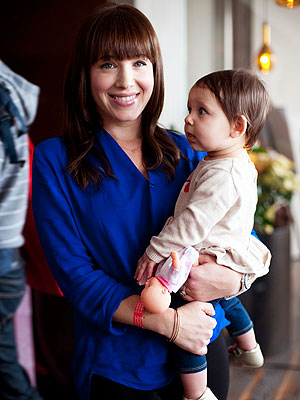While every other company is busy chasing the 7-inch tablet market, Toshiba (TOSBF) is keeping its eye on people interested in 10-inch tablets. Its new Excite 10 SE Android tablet is fairly similar to its Excite 10 LE, sporting a 10.1-inch 1280 x 800 resolution display, NVIDIA Tegra 3 quad-core processor, 16GB of internal storage, 3-megapixel rear camera, HD front camera, microSD card slot and Android 4.1 Jelly Bean. It doesn’t have the iPad’s eye-popping Retina display or the Samsung (005930) Nexus 10′s crisp 2,560 x 1,600 resolution with 300 pixels per inch, but it’s more than adequate for most basic tablet tasks. And at $ 349.99, it’s not a bad deal for a 10-inch tablet. The Excite 10 SE goes on sale December 6th and will be available from ToshibaDirect.com and select retail stores. Toshiba’s press release follows below.
Toshiba expands excite family of tablets with new 10-inch model
New Excite 10 SE Tablet Powered by Android 4.1 Starting at $ 349.99 MSRP
IRVINE, Calif. — Dec. 4, 2012 — Toshiba’s Digital Products Division (DPD), a division of Toshiba America Information Systems, Inc., today announced the availability of the Excite™ 10 SE tablet, a multimedia-rich tablet with a 10.1-inch touchscreen, powered by Android™ 4.1, Jelly Bean. The Excite 10 SE offers an affordable option for people looking for a powerful and versatile tablet for the home, starting at only $ 349.99 MSRP[i].
“Our Excite family of tablets continues to grow with options to suit a wide range of consumer needs, from portability and gaming to versatility and power,” said Carl Pinto, vice president of marketing of Toshiba America Information Systems, Inc., Digital Products Division. “We designed the Excite 10 SE to be a full featured tablet that offers a pure Android, Jelly Bean experience, while maintaining an attractive price point.”
The Excite 10 SE features Android 4.1, Jelly Bean, which improves on the simplicity and usability of Android 4.0. Moving between customizable home screens and switching between apps is effortless, while the Chrome™ browser and new Google Now intelligent personal assistant and Voice Search apps makes surfing the web fast and fluid.
Slim and light at only 0.4 inches thick and weighing 22.6 ounces[ii], the Excite 10 SE is encased with a textured Fusion Lattice finish, making it comfortable to hold and easy to carry. The tablet offers a vibrant 10.1-inch diagonal AutoBrite™ HD touchscreen display[iii] plus the NVIDIA® Tegra® 3 Super 4-PLUS-1™ quad-core processor[iv] that delivers smooth web browsing and outstanding performance for games, HD movies and more.
Stereo speakers with SRS® Premium Voice Pro create an optimized audio experience for music, video and games, while providing greater clarity for video chatting via the tablet’s HD front-facing camera. The Excite 10 SE also includes a 3 megapixel rear-facing camera with auto-focus and digital zoom for capturing HD video and photos. Featuring a wide range of connectivity, the tablet includes 802.11 b/g/n Wi-Fi®, Bluetooth® 3.0, as well as Micro SD and Micro USB ports for expandability. The tablet also charges conveniently via the Micro USB port.
Availability
The Excite 10 SE will be available starting at $ 349.99 MSRP for the 16GB model at select retailers and direct from Toshiba at ToshibaDirect.com on December 6, 2012.
Get more from BGR.com: Follow us on Twitter, Facebook
Wireless News Headlines – Yahoo! News
























